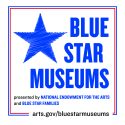To ‘read’ a work of art, we study WHAT is said in terms of HOW it is said.
We will look at these ways of reading art with the art of book designer Ken Botnick and the collage/assemblage artist John Fraser.
First, signs can be read in two ways— literally and symbolically. A sign can be a word, a picture, word clusters (sentences, etc), or groups of images in a single scene. A sign is anything used to represent something else.
Second, signs can be read across a space, such as a painting or sculpture. Or signs can also be read in a medium that takes time to be read, such as a book or movie.
The collages of John Fraser emanate with certain aesthetic pleasures from his use of diverse and sometimes disjunctive elements. The collaged elements are removed from their original context and creatively refashioned into new wholes. By intuitive and reasoned arranging and sequencing Fraser orchestrates pleasing compositions rich with intrigue.
Fraser places historic cultural objects into new contexts that allow reinterpretations using his new associations of perspective and mood. Books are often a source for his reinterpretation.

John Fraser, Measure For Measure, 2018, seen here in detail, features a book spread with an exposed, aged, yellowing spine, all pages missing. The original endpapers replaced with crisp new sheets. A carpenter’s folding ruler squares one corner of the book. The ruler adds tremendous material and metaphoric power to the book. The disemboweled book and ruler form a relationship binding one to the other. “Measure for Measure” is also a tragicomedy by Shakespeare.
For Ken Botnick, the art and craft of graphic design is central to his practice of making artist books. An artist book takes a written text—poem, short story, or essay—and enhances it with illustrations, typography, or any of the elements used to make a book, such as kinds of paper or method of printing.
Botnick defines his art practice by analogy: “artist books are to the world of books as poetry is to the world of language.”
One Botnick masterwork is his Diderot Project. Four years in the making, the limited edition artist book reinterprets for the 21st-century the defining document of the French Enlightenment, the Encyclopedia, or Reasoned Dictionary of the Sciences, Arts, and Crafts.

Ken Botnick, Diderot Project, 2015, this two-page spread is emblematic of the book itself. Image and Word are paired. The illustration on the left displays the structure of a machine. On the right, letters in movement, which by turning pages reveal “DIDEROT.” The ghosted images of other letters are visible and imply movement. Like trains passing on parallel tracks heading in opposite directions.
Collage and the artist book are useful to compare their methods of the HOW that each uses to get their WHAT across.
To read literally or symbolically, one starts with the materiality of the sign which is at the heart of Fraser’s collages and Botnick’s bookmaking.
Collage has an advantage in that its semiotic relations are visible in one field. One can see all the elements at once. An artist book displays its semiotic signs one or two pages at a time, with the added dimension of page sequencing and page turning in order to see and study the whole. The value when reading a book may be its slowed unfolding of patterns which encourage rereading. An artist book builds its meaning over time, page by page, and is somewhat like watching a movie. Collage is a kind of static or motionless reading and is analogous to reading a single sheet of text.
Reading works of art involve the careful inspection of how the literal, the symbolic, and their aesthetics of how operate. From the process of reading artworks, we, in turn, read the complex world in more subtle ways.
Recently retired Washington University Professor of Art Ken Botnick and Chicago artist John Fraser will be featured in the next Cedarhurst exhibition The Rapport of Beauty: Book Design by Ken Botnick and Collage by John Fraser May 15 – July 25, 2021.





